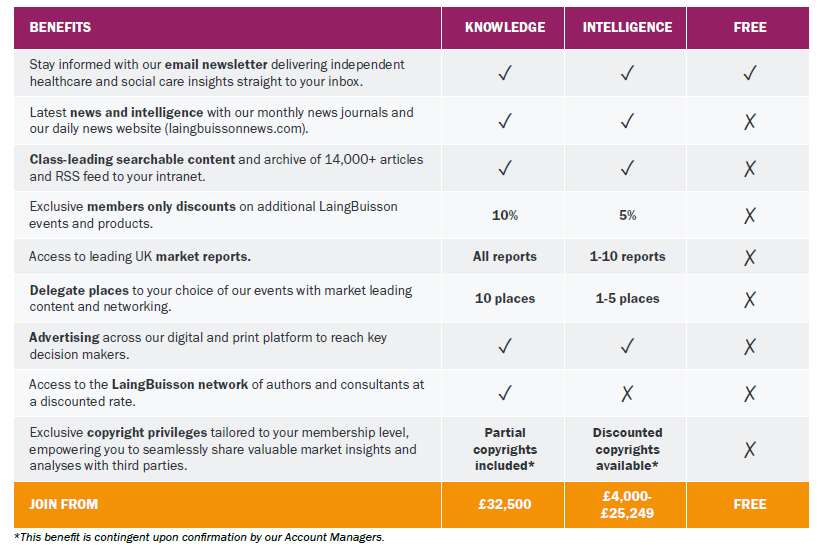Private hospitals and clinics and the green shoots of post-Covid recovery
LaingBuisson have issued the 7th edition of their Private Acute Healthcare UK Market Report.
The first edition of this report to be issued since the start of the Covid-19 pandemic, it paints a picture of where the market was immediately prior to the start of the pandemic, the impact the pandemic has had, and the private healthcare sector’s recovery as markets have started to reopen.
The market in 2019 is estimated to have been worth £6.17 billion, a real terms growth of more than 3% from 2018. This was fuelled by expanded private medical insurance payouts, growth in NHS spending and a sharp uptake in embassy demand in London, though tempered by cooler demand from domestic self-pay patients, as spending on cosmetic surgery contracted.
The coronavirus pandemic of course had an extraordinary impact on healthcare, with independent hospitals making beds, theatres and clinicians available to the NHS ‘at cost’, and routine elective surgery all but coming to a halt during the first lockdown in 2020. Private acute healthcare started it catch up in the second half of 2020, but private hospital admissions contracted by around 30% during the year compared to 2019, while outpatient activity was lesser affected.
Following the first few months of 2021, the independent hospital sector in the UK has started to recover well, catching up on a backlog of demand. The number of people treated on private medical insurance has increased, as insurance companies have sought to ensure treatment of their clients. The independent sector has also been on hand to treat more NHS patients as NHS managers have sought to reduce waiting lists. The opportunity presented by the NHS is set to continue through to the end of 2021 and into 2022, supported by the government’s £10 billion additional capacity procurement initiative. The international market for private acute healthcare in London and elsewhere has also started to return, as travel restrictions have been removed.
Also owing to the NHS waiting lists resulting from the pandemic, there has been increased interest in private self pay (where patients pay from their own pocket), especially for elective surgery and diagnostics, and a strong demand trend has emerged in 2021. The interest in private medical cover also grew strongly during this period, and this has been boosted as more remote access services have been made available to policy holders to enable them to quickly access healthcare expertise and advice, as well as speedy diagnostics and treatment when needed. Remote services developed during the pandemic have also enabled the UK to maintain some of the overseas demand for medical services that it enjoyed prior to the pandemic.
Report author, Philip Blackburn said:
“2020 was an unprecedented year for independent healthcare, and some impacts from the coronavirus pandemic are likely to be long-lasting within the sector. While the preliminary estimates show a real decline in the market during that period, NHS payments to cover costs while independent hospitals provided much needed additional capacity during the pandemic supported annual revenues.
“The market currently offers a favourable backdrop for increased demand, and long-term growth. Following Covid, many more people have considered private healthcare alternatives to access acute care and specialists quickly and ensure their physical and mental health is supported on an ongoing basis, and this is feeding through as increased demand in 2021. Also, the NHS needs additional capacity, offered by the independent sector, to bring down waiting lists, and to access specialised services available in the sector, such as oncology and cardiology which are given the highest priority. Certain areas of the market are expanding to meet a rise in demand, most notably ophthalmic services.
“Household savings during the pandemic are supporting private healthcare purchases, and there was improved consumer confidence as the economy was recovering in the first half of 2021. However, recent slowdown in UK economic recovery alongside risks of inflation and ongoing supply disruptions, have created some caution around growth.
“Most providers are also responding to downward pressure on profitability in 2020 as they dealt with unforeseen Covid factors, and operational efficiencies have been sought. There are also significant staffing and recruitment challenges within the UK healthcare sector, common across all sectors.”







